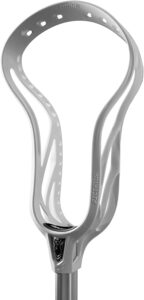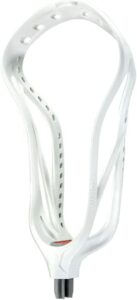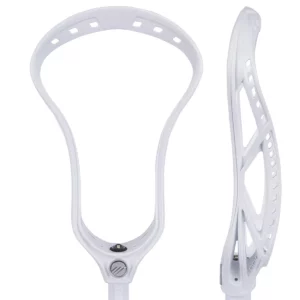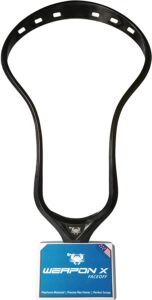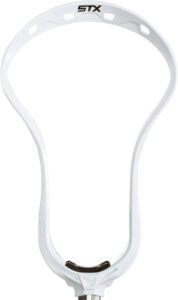With the right amount of practice and good technique, faceoffs can be won using just about any kind of head.
But at more advanced levels of play, when everyone has good technique and ample experience, the right lacrosse heads for faceoffs can indeed make a difference in a team’s rate of faceoff success.
And when choosing among lacrosse heads for faceoffs, there are a few variations to take account of. In part, these reflect the differences in faceoff styles.
There are some players who rely on quickness to pounce on the ball right away, whereas others might first look to disrupt their opponent’s stick before going for the ball. This sets up a bit of a trade-off in things like speed vs strength and flexibility over stiffness, just to name a couple.
There are also some players known as “FOGOs” (face off, get off) who are specialists that are put into the game to take as many faceoffs as possible, in most cases getting called off the field shortly after possession has been resolved.
FOGOs can therefore afford to use sticks that are optimized solely for faceoffs, since any weaknesses in other aspects of play will be less relevant for them overall.
On the other hand, players who take a lot of faceoffs but remain on the field afterwards might want a more well-balanced head that offers additional strengths beyond those related to the faceoff.
- TLDR: Which lacrosse head should I get?
- Budget-friendly: Brine Dictator
- Versatile FOGOs: Warrior Burn FO
- Shooters: Maverik Lock
- All-around offense: ECD Weapon X
- Clamping technique: STX Duel 2
This guide is primarily intended to be for advanced lacrosse players. If you are looking for more basic information about lacrosse heads or the attackman position, check out our other guides on those topics:
Overview of lacrosse heads
Beginner’s complete lacrosse stick guide
Overview of lacrosse positions
Table of Contents
What Should You Look for in Lacrosse Heads for Faceoffs?
Weight
Generally speaking, lighter heads are preferable for most players, especially attackers and middies, since it can marginally improve running and dodging speed, as well as quickness of release on shots. However, in some cases extra weight might actually be a good thing for faceoffs. Players who have a speed-based faceoff style might prefer a lightweight head, but those who rely on strength techniques to tie up their opponent’s stick could benefit from a bit more weight.
Stiffness and strength
For most players, stiffness is usually a matter of personal preference, but faceoff heads are usually designed to prioritize flexibility over stiffness, which helps with clamping down on the ball, getting under it, and even getting under the opponent’s stick if they happen to clamp on the ball first. However, there are certain parts of the head, like the throat area where stiffness can help balance out the flex in the rest of the head by adding more stability and leverage.
Pocket placement
The mesh pocket in a head where the ball is held is fixed to the head by threading strings through the sidewall holes. Heads have a variable amount of sidewall holes, meaning some allow for more creativity and specificity in shape and style of pocket.
Each head also has an optimal release point which to some extent determines the ideal placement for a pocket (low, mid, or high) on that specific head.
Generally speaking, the exact pocket and stringing patterns for a faceoff head are not as important as they are for attack or middie heads. It’s the head itself that’s going to do most of the work in faceoff battles.
That said, manufacturers of elite faceoff heads usually anticipate players using low to mid pockets, which makes it easier to retain the ball once they gain possession.
Face shape
Some faceoff heads are designed to be narrow in the middle or at the bottom throat area, which helps with certain faceoff techniques, but also can offer added control when handling the ball by reducing lateral movement of the ball in the pocket.
Throat design
A shortened throat design can provide extra leverage in faceoffs as well as improved feel and handling of the ball. Quicker releases can also be achieved by heads with shortened throats (which reduces the distance of energy transfer from the hands to the ball).
Players taking faceoffs may benefit from a quicker release if they are looking to get the ball in someone else’s hands fast after winning possession.
Scoop design
The design of a head’s scoop can affect two main components of gameplay on the field: ground ball pickups and passing the ball.
A wider scoop provides a larger surface, and therefore wider margin of error, for picking up groundballs and catching passes. A narrower scoop may help to shave off a bit of weight on the head and may help a bit with accuracy in passing and shooting, but will make it harder to catch passes and pick up groundballs.
Having a scoop that excels at picking up ground balls is a nice feature to have for any player, but especially so for those taking faceoffs who may not be able to win the ball cleanly at the whistle and might need a bit of an edge in digging it out of a scrum of multiple surrounding players.
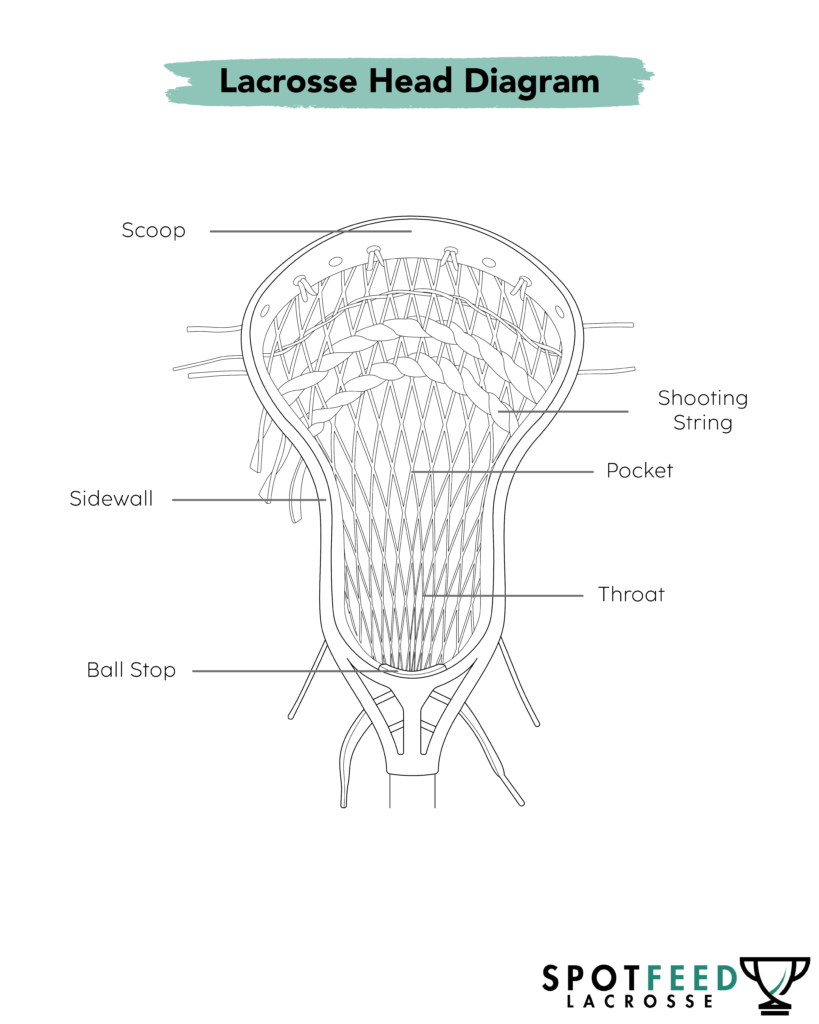
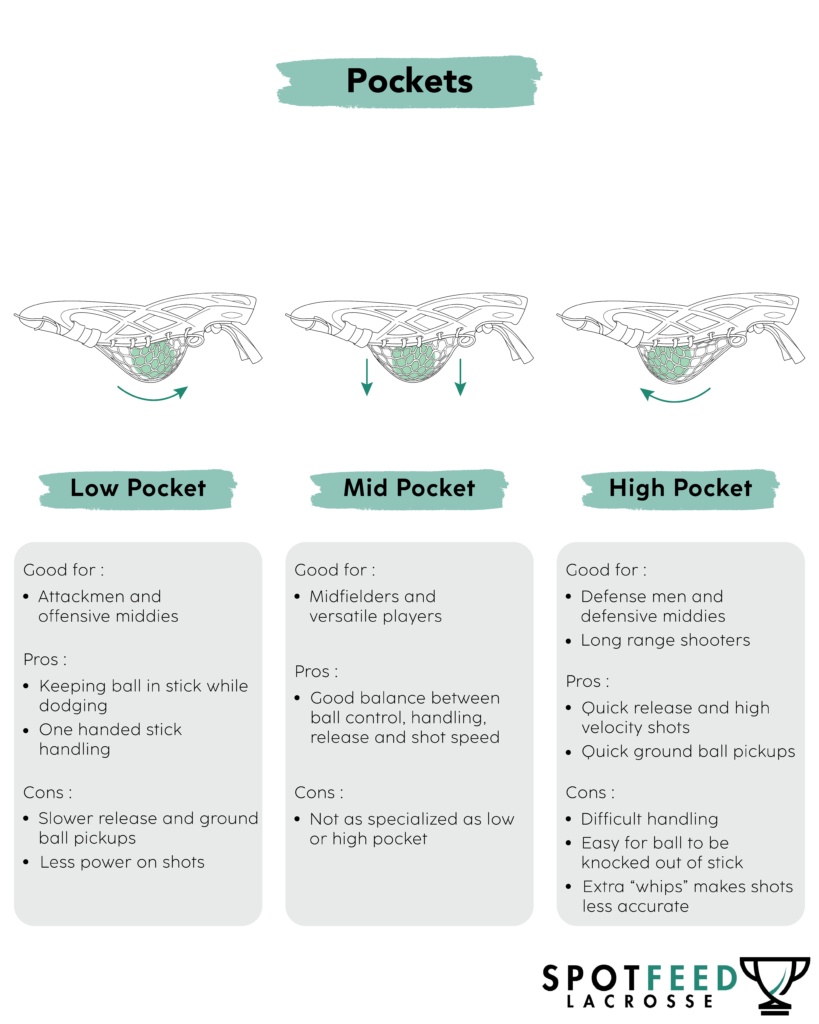
Best Lacrosse Heads for Faceoffs
Brine Dictator
Pros
- Stiff, strong, and sturdy
- Extra stiff and slightly offset throat for more leverage
- Very inexpensive
Cons
- Not the best choice for players who stay on the field after faceoffs
The Brine Dictator is a good lacrosse head for faceoffs, especially FOGOs who take faceoffs for their teams and get off the field as soon as possible after winning possession.
Such players tend to have a designated lacrosse stick just for taking faceoffs and a separate stick with a different lacrosse head for when they are asked to stay on the field for longer periods of time.
The reason the Brine Dictator fits the bill for this type of player so well is because it is designed specifically for faceoffs. It is made with a very stiff material blend which adds strength, giving players a competitive edge in the faceoff circle while also contributing to durability.
It also has an extra stiff and slightly offset design, providing the further advantage of allowing the hands to rest closer to the ball for extra leverage.
The Brine Dictator is a great lacrosse head for taking faceoffs. It lacks other frills that are unnecessary for faceoffs, but makes up for this with its inexpensive price.
Warrior Burn FO
Pros
- Unique asymmetrical design for versatility
- Short and stiff throat for more leverage and control
- Can be purchased with wedge insert to maintain shape of head when not in use
Cons
- Asymmetrical design might make regular play on the field after faceoffs more difficult
- Currently not available on Amazon
The Warrior Burn FO is another lacrosse head for faceoffs that is particularly designed for FOGOs for similar reasons as the Brine Dictator: its features are optimized for faceoffs rather than regular play on the field.
It is asymmetrically designed, with extra flexibility on the left sidewall. The advantage of this is that it allows for better positioning against the other player by pressing the head deep into the ground, getting underneath the opposing player’s head to block them from the ball.
Meanwhile, the right sidewall’s extra strength means the head can be used in a myriad of ways for players who like to mix things up with different faceoff moves and techniques.
Similar to the Brine Dictator, it also has a throat designed for faceoffs, with extra stiffness for more leverage and a shortened length to get the hands closer to the ball and provide more control.
The main downside, as with the Brine Dictator, is that the asymmetry of this lacrosse head is not particularly well-suited for all-around play after the faceoff and is therefore best for FOGOs.
Buying Options
Maverik Lock Faceoff Head
Pros
- Lightweight
- Shortened throat and mid-low pocket for extra control
- "FlexRail technology" for flexibility on faceoffs and extra power on shots
Cons
- Currently not available on Amazon nor directly from Maverik
The Maverik Lock faceoff lacrosse head is designed to improve performance for both faceoffs and regular offensive play, especially shooting.
This versatility is achieved through its unique “FlexRail technology.” As with the Warrior Burn FO, the added flexibility provides an advantage in getting to the ball on faceoffs, but it also adds power on shots through a slingshot-like effect.
Other advantages of this head which go beyond the faceoff circle include its lightweight construction, shortened throat, optimized scoop, and mid-low pocket placement–all great assets for offensive players.
Buying Options
ECD Weapon X
Pros
- Strategic flex points for wrapping around ball on faceoffs
- Shortened throat for better control on offense
- Scoop shape optimized for ground ball pickups
- Lots of customization options
- Throat insert piece to reduce stick rattle
Cons
- Throat insert means this head is only compatible with hollow shafts
The ECD Weapon X offers many of the same features and benefits of the Maverik Lock, with the addition of East Coast Dyes always offering a variety of full customization options (including custom colors and stringing services) for its products.
It too has flex points designed to get low and wrap the head around the ball. The throat and scoop are designed with both faceoffs and general offensive play in mind, meaning this lacrosse head is another great choice for players who stay on the field after faceoffs.
Another cool thing about this head is that it was designed, according to ECD, with “direct input from the all-time greatest faceoff man, Greg ‘Beast’ Gurenlian.” So it has a stamp of approval from one of the true masters of the lacrosse faceoff.
Finally, it comes with a throat insert piece, which will help the head fit to its shaft and prevent stick rattle. Be mindful of this, however, because it also means this head is only compatible with hollow shafts.
Buying Options
STX Lacrosse Duel 2
Pros
- Short, narrow throat for clamps and pinching technique
- Throat design also improves ball control on offense
- Updated version of already popular head
- Inexpensive
Cons
- Mostly designed for FOGOs
Th STX Duel 2, as its name suggests, is an updated version of an already popular lacrosse head for faceoffs, especially “clamping” on the faceoff.
The short and narrow design of the throat on this head contributes to its effectiveness on faceoff clamps: quickly clamping down on the ball using the back of the head.
More specifically, this lacrosse head is good for the “pinch and pop” technique, in which the ball is jammed between the sidewalls of the head (pinched) and then released (popped) only once the player has secured possession and safely left the faceoff circle.
This is also another great budget-friendly option of a lacrosse head for faceoffs.
Buying Options
FAQs
A good faceoff head in lacrosse typically will have a throat that is shortened, narrowed, and/or offset, all characteristics which contribute to leverage and control on faceoffs. Depending on the technique it is designed for, some heads are extra flexible (for clamping the ball) while others may be extra stiff and strong (for disrupting the opponent).
There are lots of lacrosse manufacturers who make good lacrosse heads. Warrior and STX make some of the more popular lacrosse heads for faceoffs specifically.
The stringing pattern of a lacrosse head for faceoffs will depend on the desired techniques used for the faceoff. Some players win faceoffs with the back of the head, others by scooping from the front or sweeping to the side. This will change how a player can best string a faceoff head. Another thing to consider will be whether that player is a FOGO (faceoff, get off) or someone who will stay on the field after the faceoff. For the latter, they will have to consider not only what kind of pocket they want in their head for faceoffs, but also for general offensive play afterwards.
The best way to break in a lacrosse faceoff head is just by taking lots of practice faceoffs. This can be done with a partner or simply by oneself in the backyard or on a field. Some players might also choose to use a tool like a softball or a wedge to maintain the desired shape of the head, as faceoff heads are designed to bend and may warp over time if not maintained.

